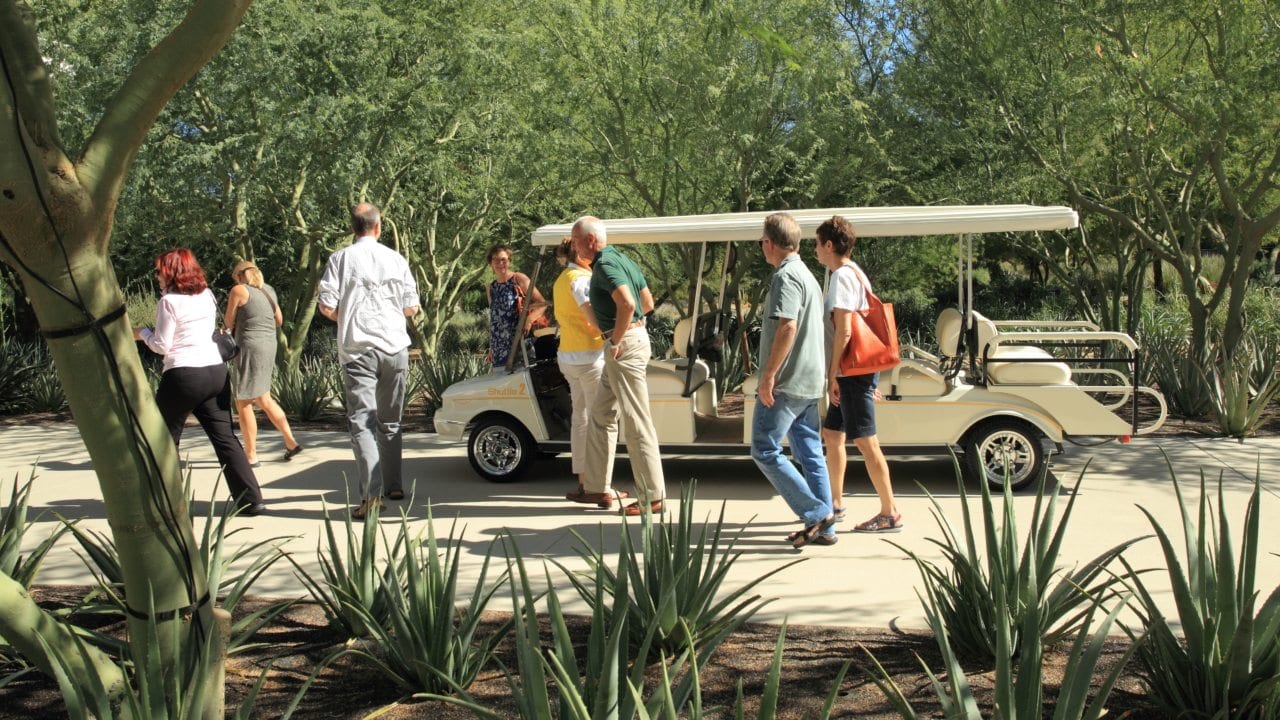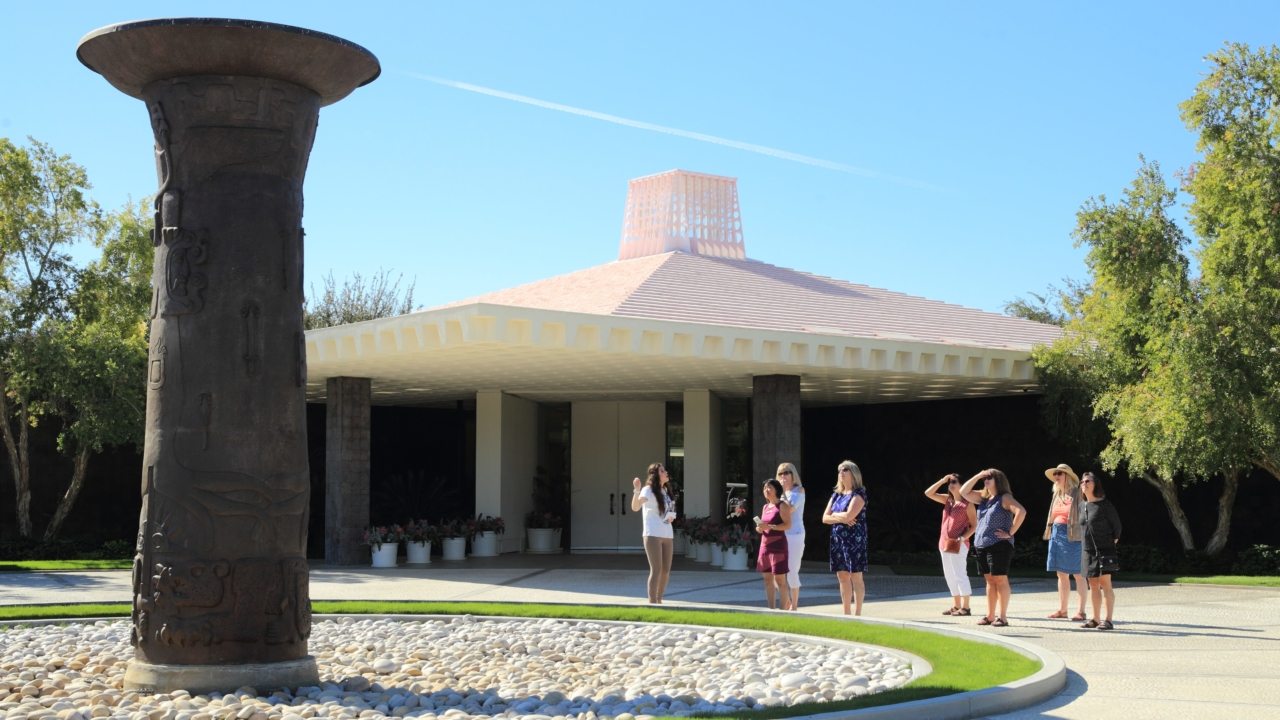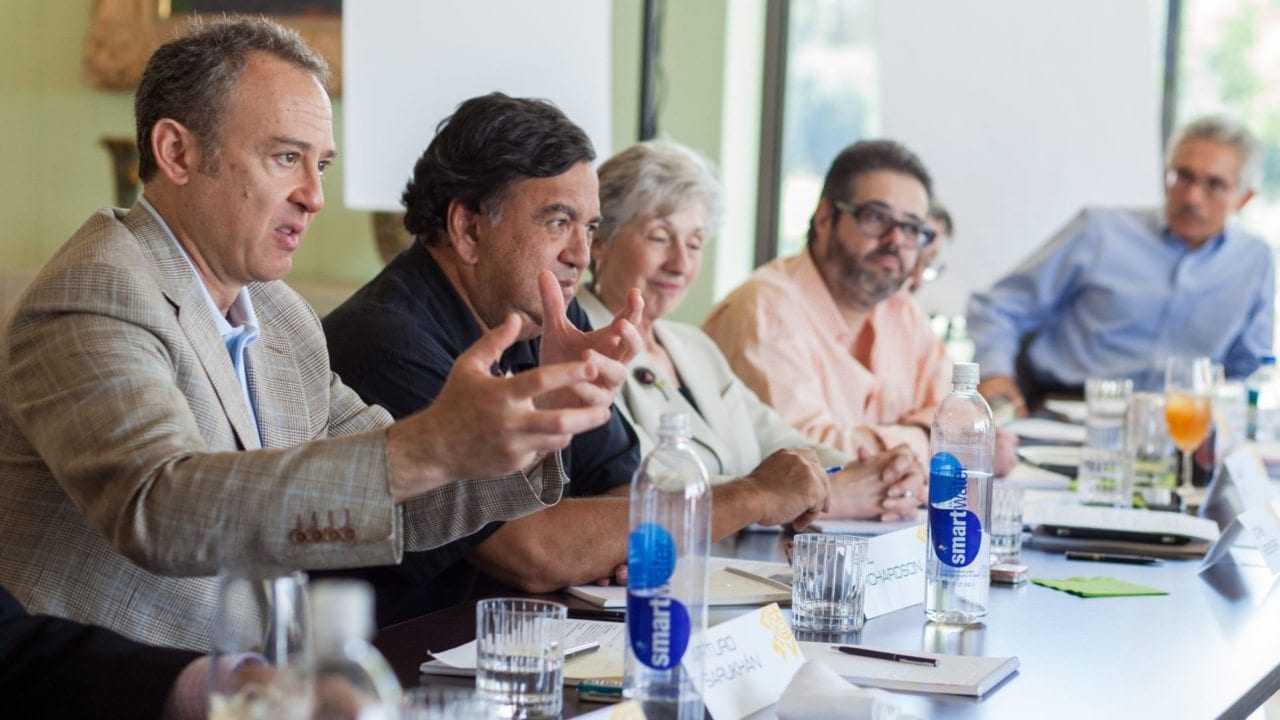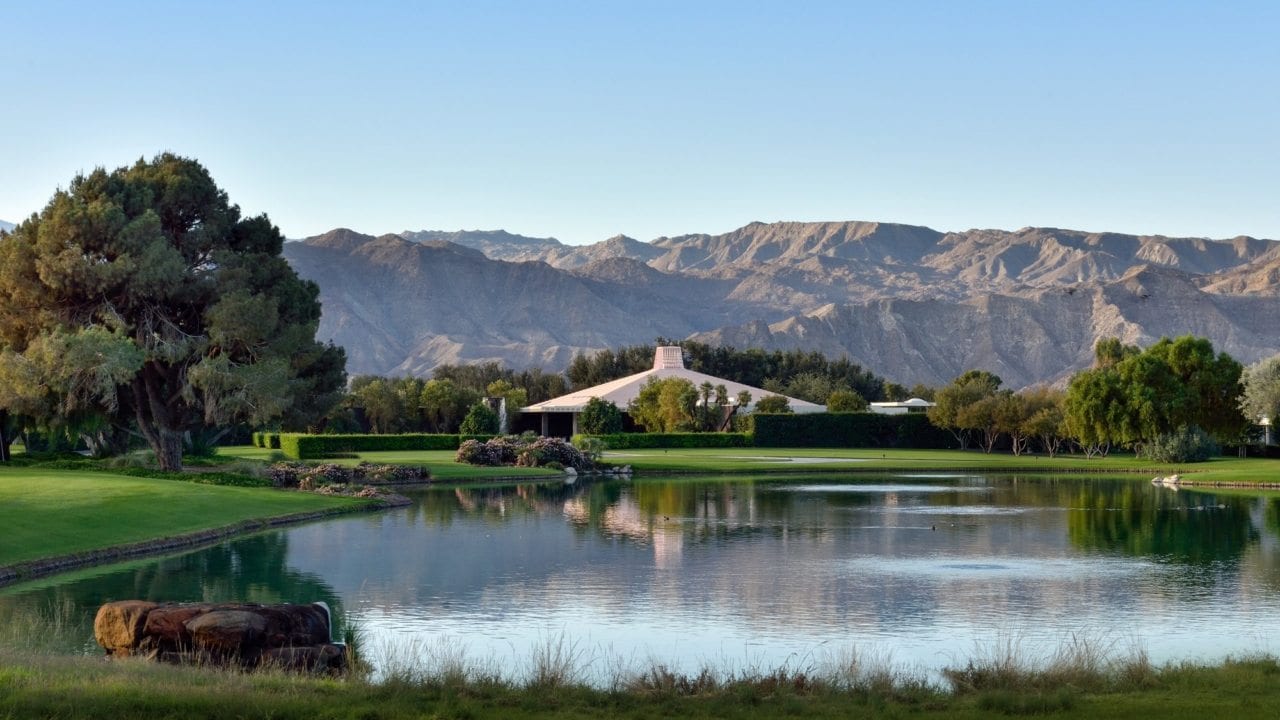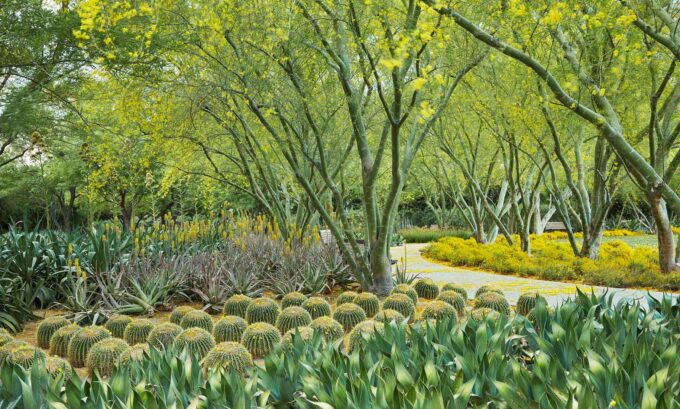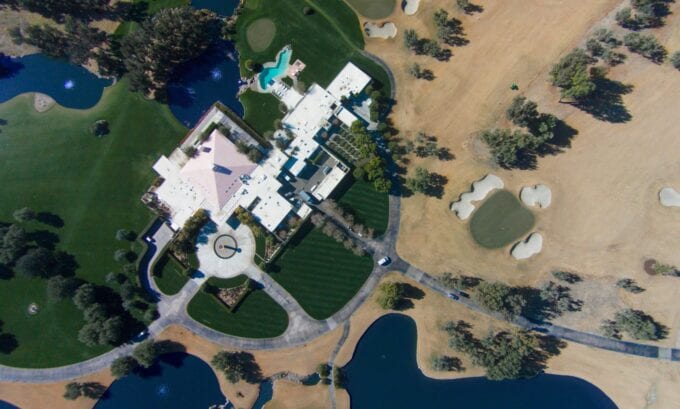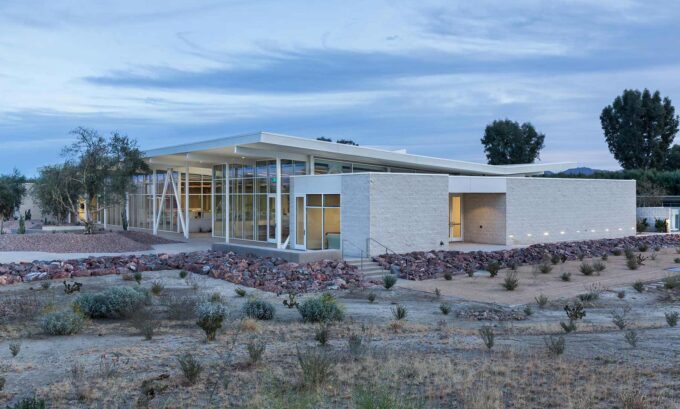STARTS AT
Water Conservation: Historic Estate
Significant water conservation efforts have been made on the historic estate since 2008. The timeline below outlines when these measures were implemented and highlights several ongoing projects that are intended to reduce Sunnylands’ environmental impact even further.
2008-2012—Before Opening to the Public
Landscape
- Sixty acres of turf replaced with mulch and meadow grasses to reduce irrigation.
Management
- A contemporary smart irrigation system that allows control and scheduling of each emitter replaced a 45-year-old hydraulic block irrigation system.
- Installed high-density polyethylene pipes.
- Added a soil-moisture calculation system.
- The estate’s 11 man-made lakes were relined to eliminate water seepage.
- Low flow plumbing fixtures installed throughout the estate.
- House toilets replaced with low flow units, reducing gallons per flush from 3 to 1.2.
Practices
- Completed Cultural Landscape Review with the Cultural Landscape Foundation to provide guidance and recommendations for restoration process. Completed preliminary recommendations in 2011.
- On-site weather station added to assist in predicting future water needs.
- Gained membership in the Groundwater Guardian program, which encourages the promotion of sustainable groundwater practices.
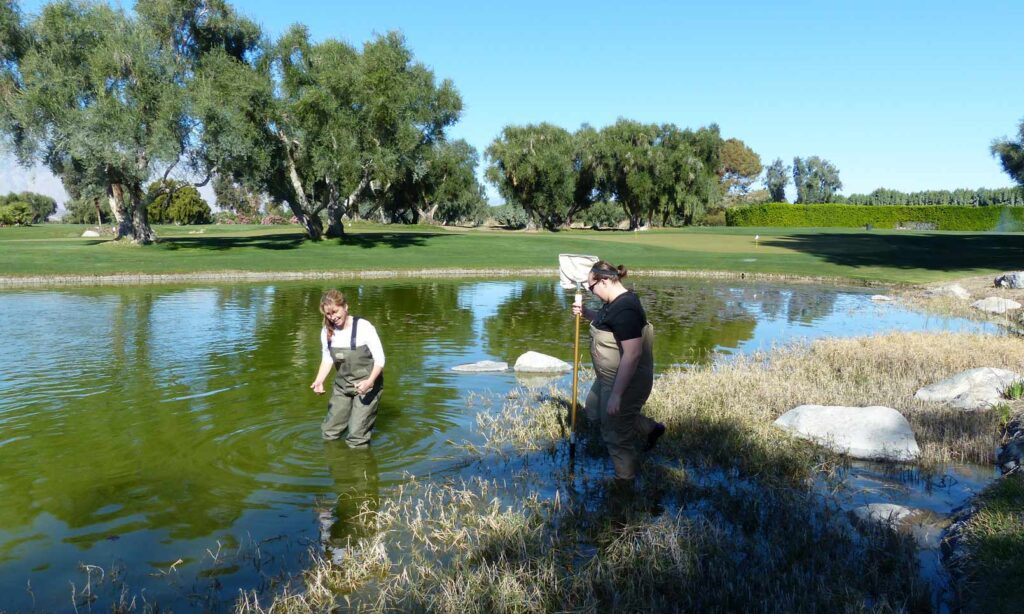

2013
Practices
- Partnered with The Xerces Society to perform water assessments through an aquatic macroinvertebrate study to determine how biologic systems and species were developing in Sunnylands’ manmade lakes. The assessments resulted in documenting a high diversity of dragonfly and damselfly, including important migratory species.
2014
Management
- Eliminated the use of a hormone fruit inhibitor spray on historic olive trees, allowing the trees to bear fruit.
Practices
- Launched the first of our ongoing public olive harvests for responsible use of the olive trees to create a food product.
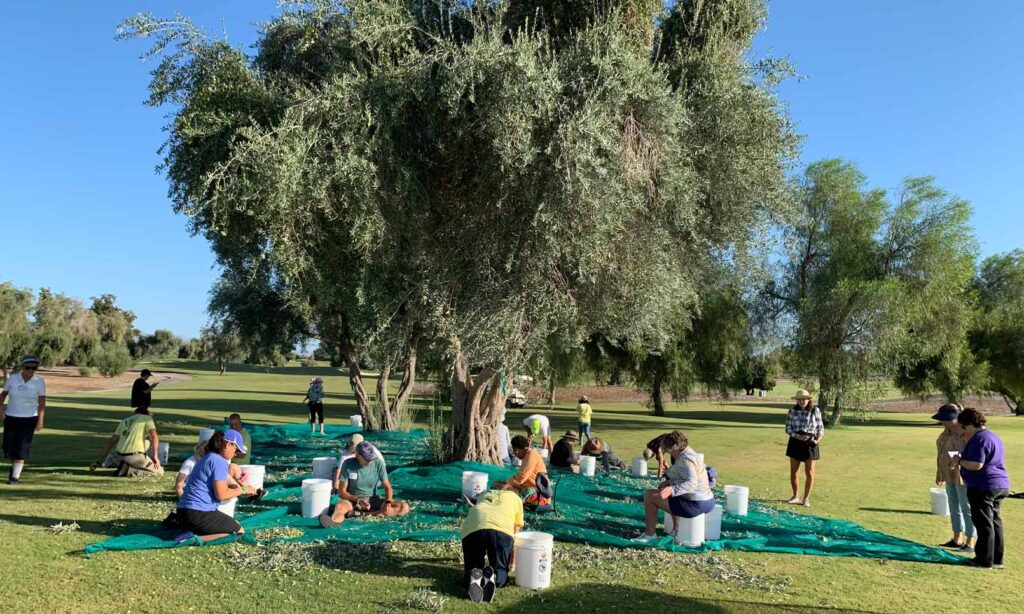

2015 (Response to California Drought)
Landscape
- Turf reduction inside the pink wall.
- Elimination of turf and reduction of trees outside the pink wall along Bob Hope and Frank Sinatra drives. Re-landscaped with rock and succulents.
- Reduced overseeding to 50 acres of the estate while preserving historic sightlines around the Annenberg home.
- Bent grass replaced on the course greens with low-water micro-Bermuda.
2019
Practices
- Completion of a Landscape Master Plan to guide the next five years of maintenance and landscape decisions related to turf, thoughtful use of the estate, and succession of tree species as they reach end of life.
2020
Practices
- In accordance with the Landscape Master Plan, two sites on the historic estate were landscaped with low-water trees and shrubs.
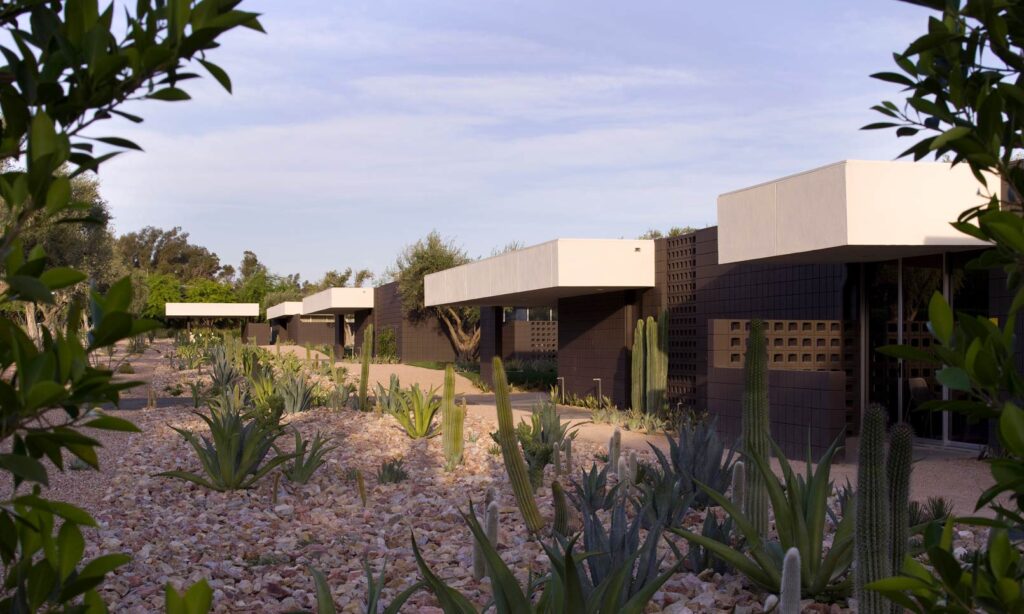

2021–Current
Landscape
- This season, Sunnylands is again using a Green Laboratory concept to reduce practices that are water intensive. This season’s tests include:
- Overseeding will be reduced by 4.6 acres on the 6-acre driving range. This will reduce water use on this section by 33%. Overseeding will be timed to correspond with expected cooler season onset in an effort to compound reductions in water use.
- Experimenting with four new warm-season perennial grasses to test durability in year-round growth. If successful, it will allow us to both maintain a visual landscape close to the historic aesthetic while allowing further reductions in the use of annual grasses, which reduces water, seed, and the carbon footprint activities needed to maintain annual grasses in the current climate conditions.
- Eight test plots are being treated with varying loads of annual rye grass. Each load is less than the current level to determine the minimal load allowable to maintain a resemblance to the historic aesthetic in the current climactic conditions. Expected to result in reduction of water, seed, and carbon footprint from reduced maintenance practices.
- Testing a new specimen of Italian Rye Grass for transitional characteristics that could allow perennial grasses to recover more quickly than they would under traditional, densely seeded annual rye grasses.
- Testing new pigments, or paints, on areas where overseeding can be withheld. Will test for durability and aesthetics to introduce along with other water reduction efforts.
Management
- Planning and implementation phase of connecting Sunnylands to the Coachella Valley Water District reclaimed water system, expected completion by early 2023.
